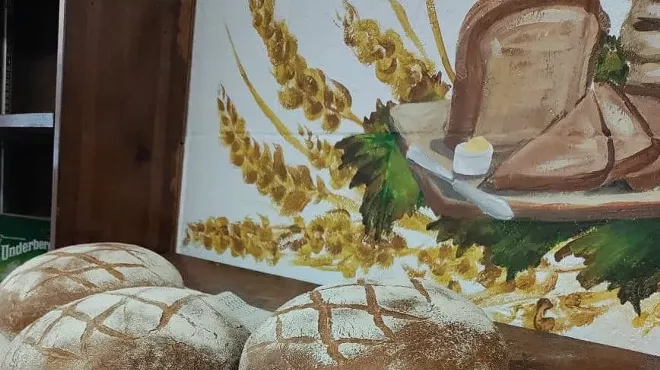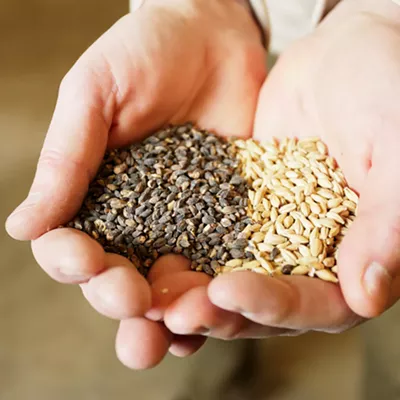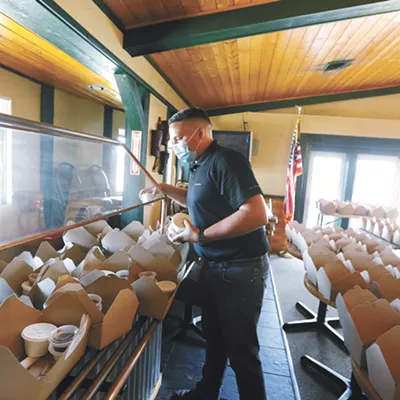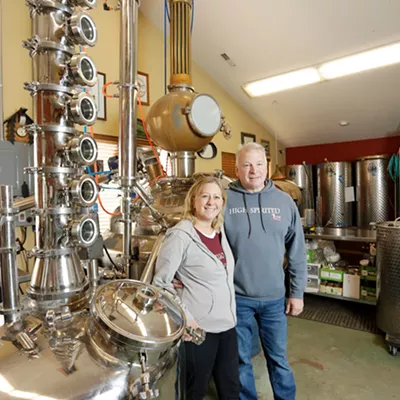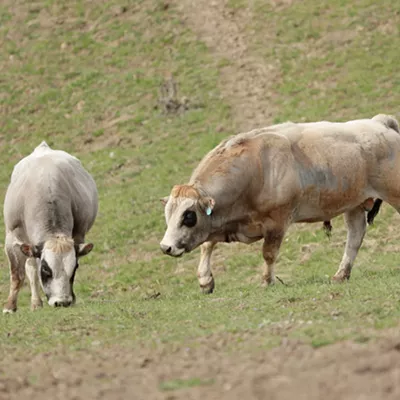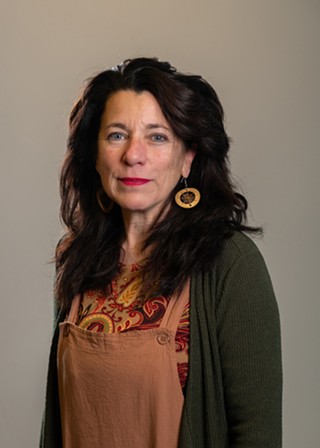An increase in local, outdoor holiday markets mixed with memories of growing up among Polish, Italian, German and other Christian European traditions inspired this exploration of festive desserts featured from December onward.
Many desserts are synonymous with their respective cultural traditions. Yet in addition to using similar ingredients — starches, fats, flavorings and, above all, sugar — many also share common ancestry across Europe.
FRENCH
The word dessert, like roughly one-third of English language words, is rooted in French — desservir — meaning to clear the table for the final course. Just as French fine dining traditions have shaped the American restaurant industry, France has also defined our notion of desserts from cookies, custards, confections and cakes to pies, pastries and more.However, you needn't wait until the end of a meal to enjoy a sweet treat, which for French-born Patricia Hebert-Jenks should be both beautiful to look at and to eat.
"In my family, even if it's just us, we go fancy," says Hebert-Jenks, who relocated to Idaho in 2009, having traded international banking experience for a career in culinary arts.
"In France, the [holiday] tradition is more about ordering from a bakery and being proud and excited to bring something wonderful," says Hebert-Jenks, whose quiches and truffles can be found at the Culinary Stone in Coeur d'Alene, where she also teaches French cooking classes.
For Christmas, Hebert-Jenks might make Bûche de Noël, or a Christmas Yule log cake, which can also be found in Belgian and Swiss cultures. Bûche de Noël is a thin cake layered with cream filling — Hebert-Jenks likes incorporating chocolate or raspberry — and rolled into a log, or buche in French.
Many restaurants in France simply don't have the capacity to do all their own baking, especially when baked goods can have a very short shelf life. So patisseries abound in France; locally, their counterparts include Madeleine's Café & Patisserie (415 W. Main Ave.) and miFlavour (3403 E. Sprague Ave.).
ITALIAN
France and Italy share a more than 320-mile border. Thus the "spoon cookies" in another of Hebert-Jenks' favorite desserts, charlotte aux marrons, are better known as lady fingers. When they get soaked in espresso and coffee liqueur and layered with mascarpone cream, that creates the classic Italian tiramisu.Find tiramisu at Europa Restaurant & Bakery in downtown Spokane, whose extensive dessert menu from longtime baker Christie Sutton includes roulade, a rolled up cake comparable to French buche cakes. They also have (German) apfelstrudel, and several (French-inspired) mousses and tarts.
In addition to tiramisu, Italia Trattoria in Browne's Addition serves a bread pudding made with French brioche and roasted pears from chef Anna Vogel, reflecting the James Beard Award semifinalist's European training and heritage.
PORTUGUESE
Italia Trattoria's fried zeppole breakfast doughnuts are also similar to Portuguese sonhos, says Rind & Wheat bakery owner Ricky Webster, who's Portuguese and Italian. His Spokane bakery produces a smattering of European desserts like French madeleine cookies and financier cakes, as well as a Portuguese egg tart, but holiday baking is special, he says."At Christmastime in Portugal, or really all over Europe, it's about using special ingredients... that may be a bit too expensive to indulge in all year long," Webster says.
In Portugal that includes egg yolks, cream, candied fruits, oil for frying and sugar, he says.
Last year Webster made Portuguese Bolo-Rei or King's Cake, which is French in origin, yet has similarities to a German cake Webster occasionally offers at Rind & Wheat called stollen.
GERMAN
Stollen is more like a bread than a cake, with a core of dried fruits, sometimes nuts, or a thick, sweetened paste of ground almonds called marzipan. Its sweetest component is a dusting of confectioner's sugar on top.That's typical of German baking, says Alpine Deli owner Andrea Lejeune-Weiler, who was raised in Bernkastel-Kues, about 40 miles east of Germany's border with Luxembourg.
"Most German — most European baking, really — is not as sweet as here in America," says Lejeune-Weiler, who earned her culinary degree in America. Prior to that she worked at Alpine Deli under its original owners. (They sold it to a Bosnian family, who eventually sold it to Lejeune-Weiler and her husband in 2019.)
For her family, Christmas is all about cookies, says Lejeune-Weiler, who is partial to lebkuchen (similar to gingerbread), and vanillekipferl, a crescent-shaped, shortbread cookie from Austria.
NORWAY
Northern Europe is well-represented in the Inland Northwest's population, but hardly at all in its food scene. Although Scandinavian venues are noticeably absent here, desserts and other baked goods occasionally pop up in the culinary landscape, like at Breaüxdoo Bakery in Spokane Valley.On Dec. 11, chef-owner Gage Lang and his grandmother will be making — and selling — Norway's version of a tortilla, known as lefse, and the lighter-than-air crispy cookie called krumkake, using recipes from his great-great-grandmother for both. Visit the bakery's Facebook page for more details on the upcoming pop-up.
SLAVIC
When my grandfather visited friends or family, he'd stop by the Polish bakery for some kind of cake or cookie, like kolaczki, Polish fruit-filled cookies also found in Austria, Denmark and Russia. That white box tied with red and white string meant goodies in my future (if I behaved).
Although our region lacks a dedicated Polish bakery, it is rich in Slavic businesses, which offer foods — both scratch-made and imports — that represent Poland, Ukraine, Russia, Hungary, Belarus, Czech, Romania, Bosnia-Herzegovina, Moldova, Latvia and Serbia.
Owned by Ukrainian Irina Ustimenko, Sweet World Cakes in North Spokane, for example, supplies decadent desserts for numerous businesses, including Magnolia, her recently opened deli and modest grocery in Airway Heights. Try the layered and cream-filled honey cake or Ustimenko's layered-cake version of Italian tiramisu.
Yummy Snamy is one of several deli/markets catering to the Slavic community. Formerly Mariupol, the shop regularly has Russian vatrushka, a light pastry similar to a cheese Danish. It also recently added made-to-order crepes, which one might otherwise associate with France.
Additional Slavic markets where locals might find in-house baked desserts include Odessa European Deli, Matreshka European Deli and the three locations of Kiev Market.
Finally, International Coffee and Bakery serves scratch-made treats with a Russian accent. Formerly Malinka Euro Market, the bakery's traditional Russian desserts include a baked meringue called pavlova (the origin of which is also claimed by Australia and New Zealand). Its spin on Italian cannoli consists of a delicate wafer cylinder reminiscent of Norwegian lefse and a filling flavored with passion fruit native to South America.
Its peach cookies filled with the Russian version of caramel that in Mexican cuisine is called dulce de leche are very popular not just this time of year, but all the time, says Roman Chebotarev, who co-owns the store with family. ♦





